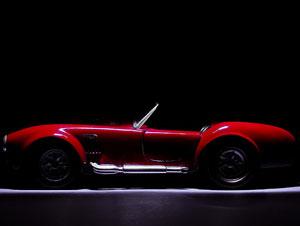Car Designers of the Future
CC: ryanjamesanderson / Flickr
"That is something that we talk a lot about, in terms of car design. There have been so many restrictions. So, if you are using the same types of materials and plastics in vehicles, and you start to put those plastics in more and more places, you are going to see the same types of radiuses (sic), same types of shapes because of the restrictions on how those things can be created," says Johnson.
Taylor feels that the problem has less to do with Detroit group-think, and more with legislative issues and aerodynamics. Certain aspects of design are dictated by guidelines within legistlation that were created to promote safety.
Johnson adds, "If you look at what people find beautiful, we have these certain proportional things that we value, so that is translated across time in automotive designing. In any form of design that has history, you are going to see proportions that will come up time and time again because they just feel good."
Taylor responds humorously with, "I think all of the ugly cars just disappear."
New manufacturing techniques will also allow new designs to become reality. The once all-powerful influence of Detroit over auto has diminshed to a point where smaller manufacturers, no longer needing to be part of the "Big Three," are able to conceptualize and realize cars — something the industry could not have supported even 20 years ago.
Down the hall, some students have an assignment, sponsored by Ford. They are designing vehicles that are supposed to have big interior space and good aerodynamics. Students Ben Messmer and Lili Melikian about the prototypes they're working on.
Their prototypes incorporate renewable energy and efficiency. Melikian says, "I think that's just become a really big concern for us in the last couple of years because of the fuel shortage. But, I feel that it should have been a consideration from the get-go. We are trying to play catch-up in this industry."
A peculiar back up feature that may not have been considered even one year ago that has been incorporated into the designs in the notion of the vehicle becoming a home. Messmer says, "What if the vehicle itself became the housing?"
He points to some interviews with people that have the old Volkwagen campers; those respondents all indicated that they would have the option, if need be, to live in the vehicle. "In all of these interviews, one of the funniest things that came up is that almost everybody that I interviewed bought the vehicle first for surfing, have taken their families on adventures, in the vehicle, and thirdly, so many people said that it's also a type of insurance of last resort."
PRI's Peabody Award-winning "Studio 360 with Kurt Andersen" from WNYC is public radio's smart and surprising guide to what's happening in pop culture and the arts. Each week, Kurt Andersen introduces you to the people who are creating and shaping our culture. Life is busy — so let "Studio 360" steer you to the must-see movie this weekend, the next book for your nightstand, or the song that will change your life.
